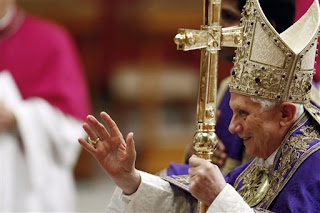10 Things You Should Know About Advent
I was recently wondering about the origins of Advent and its history. So I did a little research and came up with the Top Ten Things You Need to Know about Advent:
- The first recorded “preparation for Christmas” is found in the acts of the Synod of Saragossa, Spain in A.D. 380. This synod declared that all baptized Christians should be present in Church from December 17 till December 25. If you do the math, that comes out to the eight days before Christmas–not quite a full Advent season, but it’s a start.
- Saint Caesarius of Arles (502-542) is recorded to have delivered the first document homilies on Advent.
- The Synod of Macon in Gaul (modern day France) in A.D. 581 is our first firm witness of what we might call the season of Advent. It states that the liturgical norms for Lent be kept from November 11 to December 24 (about 40 days). The connection made here between Advent and Lent reflects the reason why the penitential color of purple is common to both Advent and Lent.
- We also have a copy of a sermon given by Pope Saint Gregory the Great (590-604) for the second Sunday of Advent.
- In the seventh century, Advent was celebrated in Spain with five Sundays! The Gelasian Sacramentary also gives liturgical propers for the “five Sundays of Advent.”
- The Eastern Churches began celebrating Advent in the eighth century as a time of strict fasting and abstinence–a practice still common Eastern Orthodoxy. This practice also reflects the season’s similarity to Lent. Incidentally, red is the most common liturgical color for Advent in the Eastern churches.
- Pope St. Gregory VII (1073-85) apparently reduced the number of Sundays in Advent from five to four–the current practice.
- The third Sunday of Advent is technically called Gaudete Sunday and it is marked by rose vestments (don’t ask your priest why he’s wearing “pink”!) and rose hangings. Gaudete means rejoice because the third Sunday marks the over-half-way-point of Advent. This usage corresponds to the rose vestments used on Laetare Sunday, the fourth Sunday of Lent (also the over-half-way-point of Lent).
- The Advent wreath, found in many Catholic homes, is a rather modern invention. It derives to a 19th century German custom, apparently Lutheran in origin. The practice was soon adopted by Bavarian Catholics and spread all over the world.
- The liturgical season of Advent anticipates Second Advent (Coming) of Christ while also remembering the First Advent (Coming) of Christ at Christmas. Thus, the season generally celebrates the activity of God in history in and through our Lord Jesus Christ. Advent is the parenthesis in which falls all of Christian history.
I hope you found this helpful. Please send it along to friends and family and have Happy Advent.
Have a Happy and Holy Advent,
Taylor Marshall
PS: Tune in again at Christmas for a special piece on the “Top Ten Things to Know about the Twelve Days of Christmas.”
Do you enjoy reading Canterbury Tales by Taylor Marshall? Make it easier to receive daily posts. It’s free. Please click here to sign up by Feed or here to sign up by Email. Please also explore Taylor’s books about Catholicism at amazon.com.
What to Watch Next
I watched reels and shorts of Charlie Kirk today and saw them in a new light. He...
I share my thoughts and memories of Charlie Kirk. Taylor’s new Bestselling Book: Christian Patriot: https://amzn.to/4n70va2 Watch...
How do you know if someone is possessed by a devil? How do people become possessed by...
SHOP THE TAYLOR MARSHALL STORE
Dive Deeper

GET CONFIDENT IN YOUR FAITH
Explore the fascinating world of Catholic teachings with Dr. Marshall. Together you’ll unpack the brilliant answers the Church gives to tough questions about the Faith. The best part: you go at your own pace. Start this exciting journey today.


 >
>




